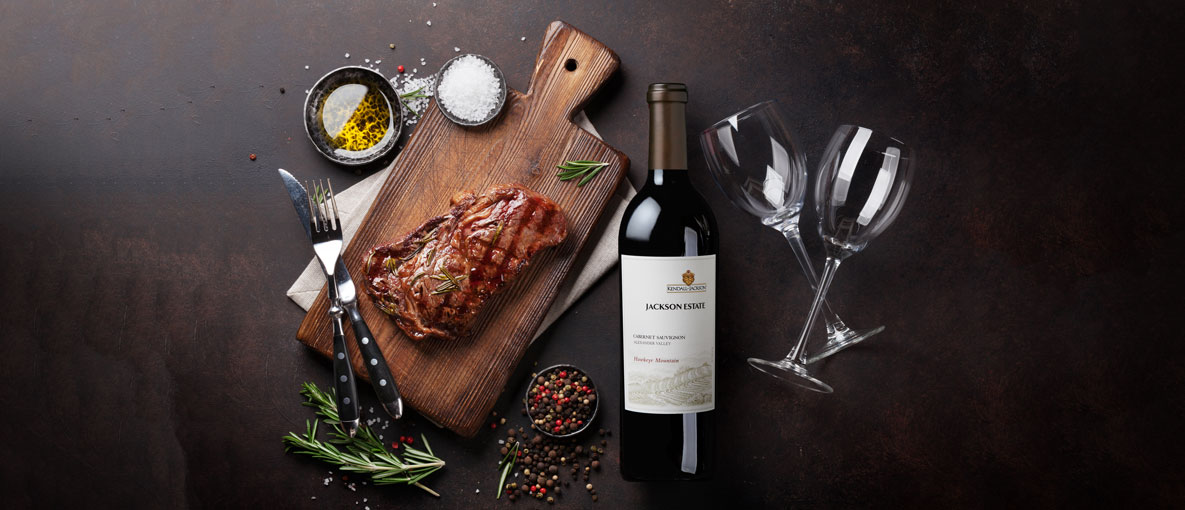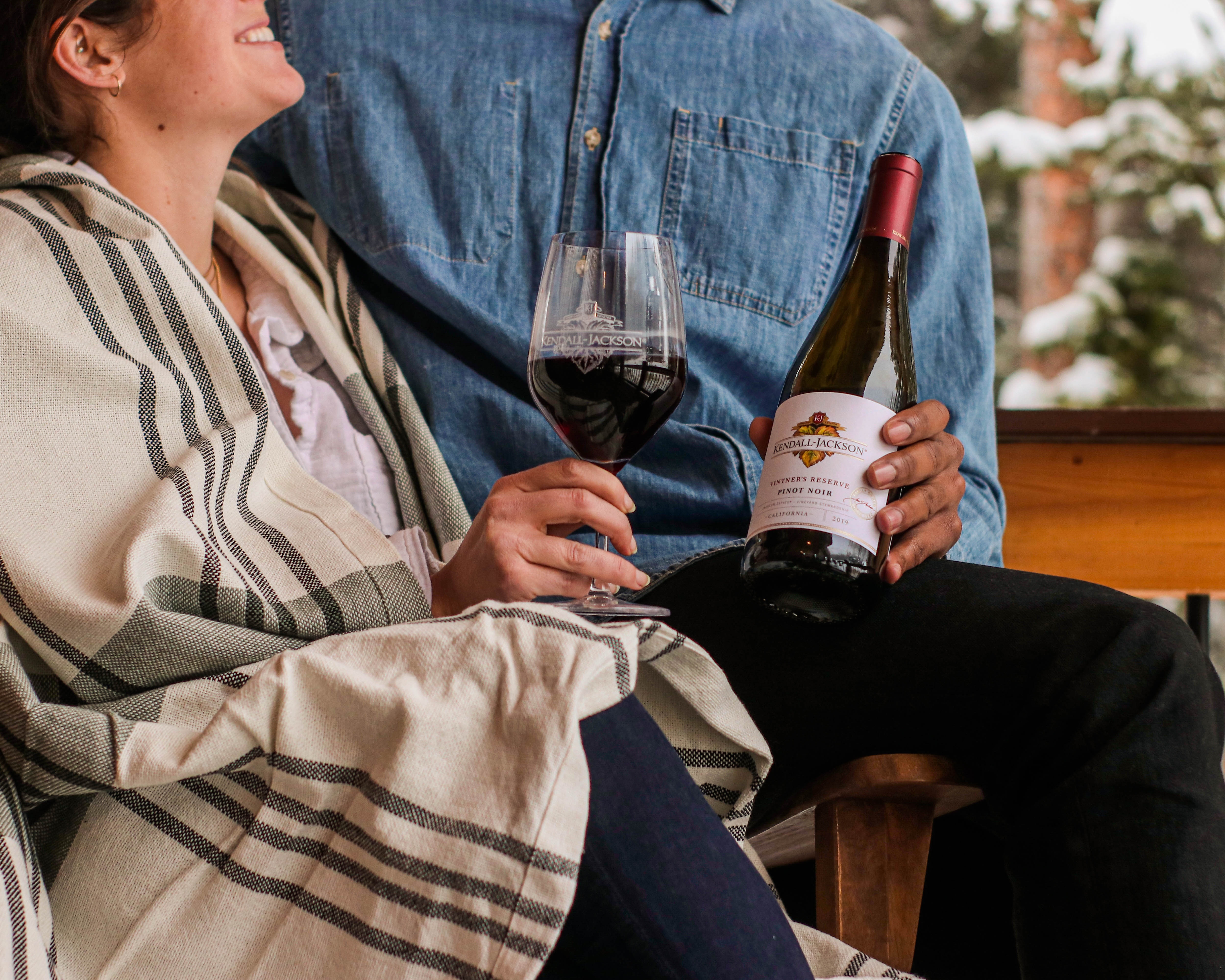How Does Color Get into Rosé Wines & Red Wines?
One of Merriam-Webster’s primary definitions of color is, “A specific combination of hue, saturation and lightness or brightness.” So, how does color get into rosé and red wine – from shade to depth to limpidity?
Conjuring Up Color
It starts with the grape skins. Ever noticed that your black table grapes from the supermarket have a yellow-green pulp? Well, they do. If you smashed up those grapes and left them in a covered bowl in your refrigerator (or on your counter top) for a few days, you would see that the grapes’ pulp would begin to take on the dark color of the grapes’ skins. Abracadabra! It’s the same process in winemaking. It’s a bit like steeping a tea bag in water.
What Is Pink Wine: Delving Into Rosé Color Via Winemaking
Actually, that’s how it works most of the time. Rosé – more specifically – can be made in three ways. One is the way described above. The wine just spends a far shorter time with the skins, as little as 12 to 24 hours for rosé versus 10 to 30 days for reds! This is called a “press rosé”. When the right color is achieved, the wine is pressed off the skins. The skins are discarded and the remaining juice is fermented like a white wine. It’s the same process for red wines, just with a lot less skin contact.
Rosé can also be made in conjunction with red wine. The process for making these rosés is called “bleeding”. As soon as the juice color has achieved the desired color (almost like choosing a Pantone for an invitation or a paint sample at Home Depot), part of the juice is siphoned off (or “bled”) the skins to be fermented on its own. The rest of the juice stays with the skins to be fermented fully as a red wine.
Finally, though rare, a small portion of red wine can be blended into white wine to give the wine a rosé color. This is unusual, and it isn’t allowed everywhere. One place it is famously allowed is Champagne. Do you like Rozay? (Oh, yeah!)
What Is Important About Rosé Wine Color and Red Wine Color?
There is a highly diverse rainbow of colors in wine spanning from rosé into red. The vast color spectrum comes from many different things. The main contributors to color include:
- Type of grape (some grapes have more pigmented skins than others)
- Length of contact between grape skins and grape juice (that turns into wine)
- Blend of grapes (a greater percentage of paler skinned grapes with a smaller portion of darker skinned grapes usually results in a lighter-colored wine)
- Aging the grapes in inert tanks (color stays brighter) or in wood vessels (color tends to fade or slip into orange – for rosé – or brick tones – for long-aged red)
What can you tell about a youthful wine from its color? Not much, really. A school of thinking that began in the 1990s trained many of us to think that darker is better. That isn’t necessarily the case. Pale-colored red wines can be every bit as characterful and as age-worthy as dark-colored reds.
Slightly older wines tend to be more expressive with multiple color influences. Rosés turn salmon and orange in color while reds head into the brickish and brown. Depending on the wine, this might start as early as five years after the harvest. Alternatively, it could take a different wine ten years to show visual development.
Is Rosé for Ladies? Is Rosé Wine Sweet?
Rosé used to be reserved – at least in the minds of some – as a drink for ladies. Not so long ago, I was offered a glass of sweet rosé wine at a major conference as I was assumed to be a companion to my fellow male professionals rather than a full-on pro – the only Master of Wine in the group, to boot! The well-intentioned gentleman sat me to the side with a glass of the sweet pink stuff saying, “My mama likes this wine.” My colleagues exploded in laughter… and it still makes for good story telling.
Moreover, unless you’re blissfully off all social channels (not a bad idea some days), you’ve surely seen the “brosé” phenomenon, where trendy – and typically moneyed and well-traveled – men drink pink amongst themselves!
As for whether rosé is sweet, it depends. Yes, rosé can be off-dry to rather sweet. That’s true for white wine and red wine, too. Yet, all of these wine categories can also be dry.
Certainly, the USA has a legacy connotation of pink wine being White Zinfandel, a decidedly sweet wine style first made as an accident in the early 1970s. Though technically a winemaking mistake, the wine style became euphorically popular for decades before sippers rebelled.
However, today’s rosé fever is largely based on dry rosé wine. Moreover, Provençal-esque wine styles tend to be preferred. I have no complaints against these pale-colored, delicate and mineral bottlings, but I also love the boldly colored, full-throttled flavor rosés out there.
Food Pairings for Rosé Wines
What’s fun about rosé is that there is something for everyone - between dry and sweet, pale and dark, easy-drinking and complex. In the Kendall-Jackson family of wines, there’s the Vintner’s Reserve Rosé and the Grand Reserve Rosé.
The Vintner’s Reserve is made in the pale, elegant and lean profile. After all, it’s almost three-quarters Pinot Noir, which is an aromatic but generally more structure-restrained variety. I find it best with lighter foods like shrimp cocktail, fresh cheeses and main course salads.
Fuller-bodied, darker and often spicier wines like the Grand Reserve work nicely with grilled steak fish, charcuterie and mezze platters. The Grand Reserve is dominated by Rhône Valley grape varieties like Syrah and Grenache. These give this wine a more copious mouthfeel and more rambunctious flavor.
One of my favorite things about rosé is that often works as an equalizer. It often splits the divide between white and red perfectly. Alas, it’s usually consumed as a summer drink, but it’s excellent for any season.
However pale or dark your rosé wine or red wine is, now you know how it came to be. When I was on a high-end restaurant floor as a sommelier one night, I heard a diner tell his companions rosé Champagne was made by peeling the skins off the grapes to give the wine a lighter color. Hmmm… not quite, Sir.
Photography provided by The Everygirl
Christy Canterbury is a Master of Wine, journalist, speaker and judge based in New York City. In 2014, she was short-listed for the Roederer Online Wine Communicator of the Year Award. Her work has been published in Decanter, Wine Enthusiast, Edible Green Mountains, Wine Searcher, Food Arts, Snooth, Beverage Media, TimAtkin.com, Civiltà del Bere, Wine Business Monthly, TASTED, Selectus Wines and in other outlets.




